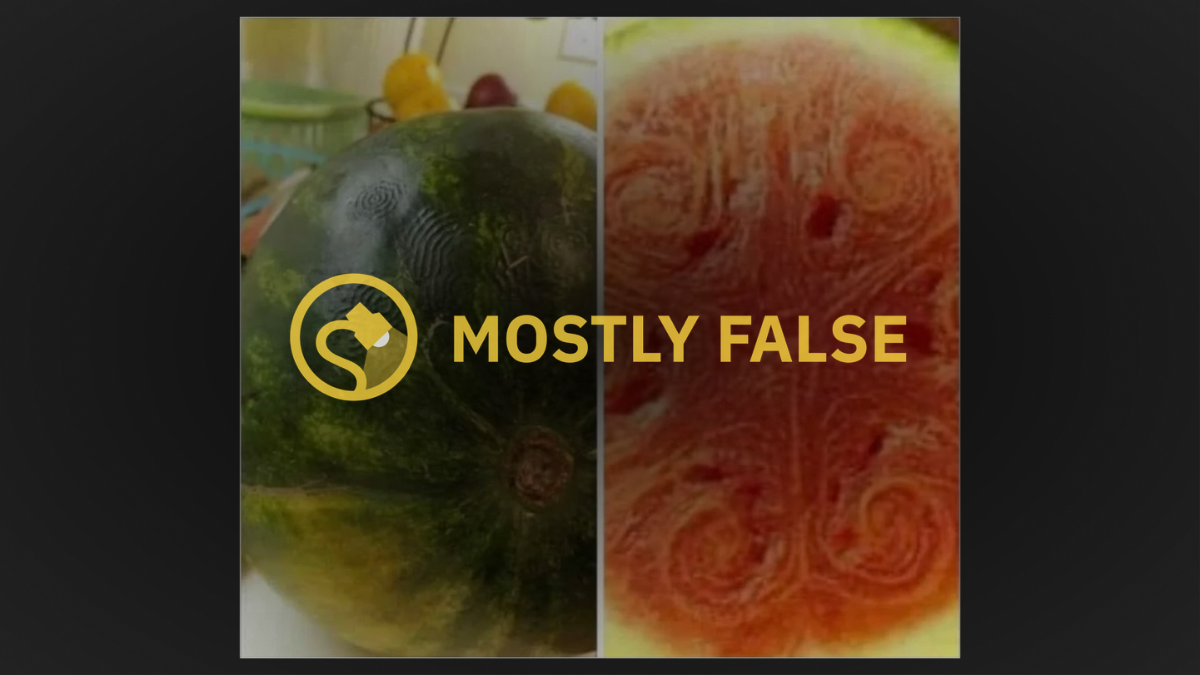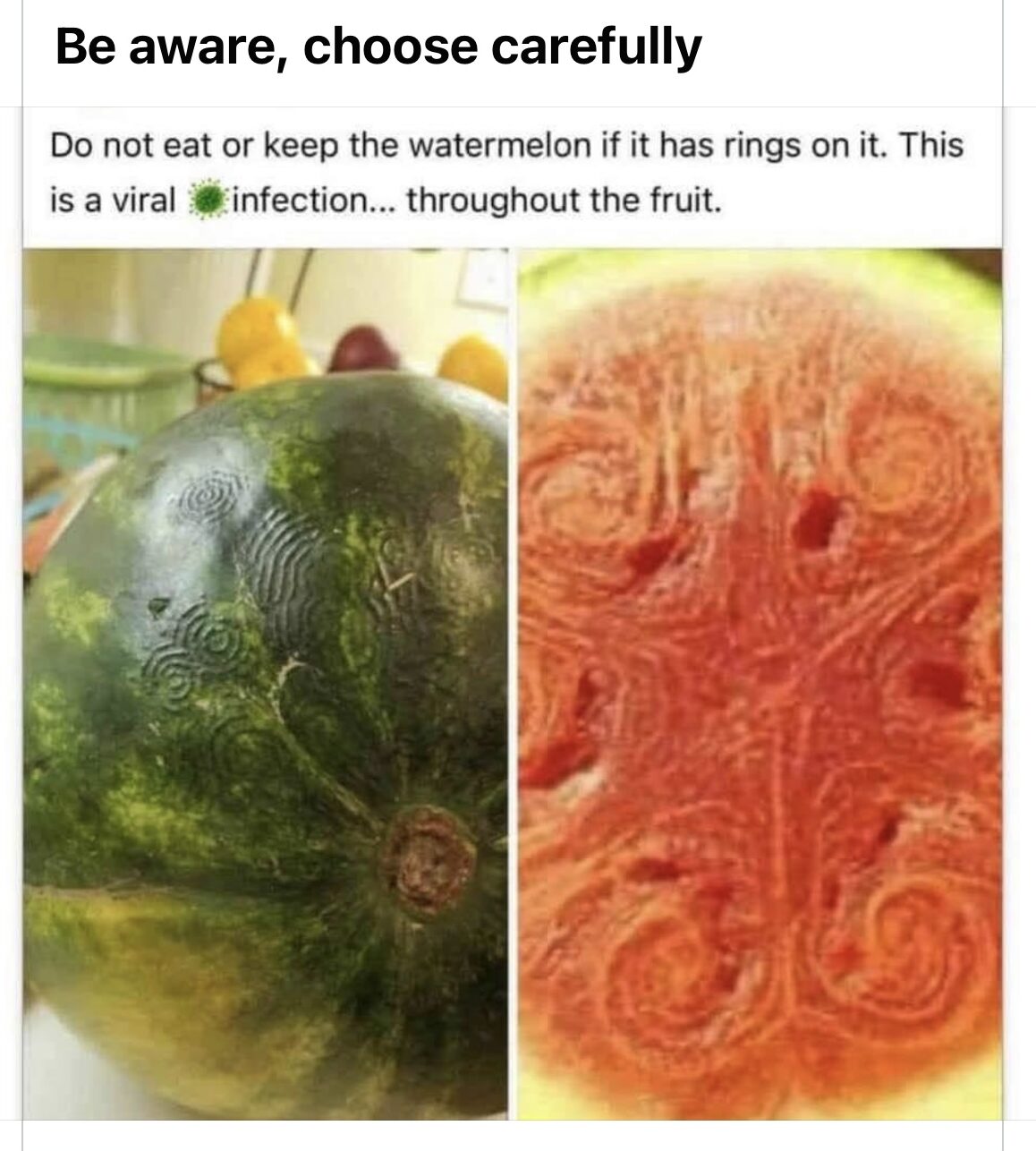The pattern on the watermelon is caused by one type of mosaic virus known to infect fruit, weeds, and other agricultural crops. However, experts note that if the fruit is still intact, it will likely not cause harm and is safe for human consumption.
In June 2021, a photograph circulated on social media that claimed to depict a watermelon infected by a virus that created web-like rings on the skin and on the meat of the fruit.
“Do not eat or keep the watermelon if it has rings on it,” the post warned.
Snopes readers asked us to determine whether such a viral infection was real and, if so, whether the fruit was inedible. The infection in question is likely one of two viruses known to infect watermelon, Watermelon Mosaic Virus 2 (WM-V) and Watermelon Mosaic Virus 1 (WM-V1), also known as Papaya Ringspot Virus (PRSV). But though all three of these viruses can cause the spherical patterns on the exterior and interior of the fruit, that does not necessarily mean that consumption of an infected watermelon can be harmful to humans. As such, we rare this claim as “Mostly False.”
Watermelon is not the only fruiting plant that can become infected with a mosaic virus. According to the University of Minnesota agricultural extension program, mosaic viruses can infect all cucurbit crops — a group that includes cucumber, melon and squash — as well as common weeds, legumes, and vegetable crops.
Aphids typically acquire the virus from infected weeds or alfalfa before transmitting it to melons and other agricultural products. WM-V in particular is transferred by aphids through what is known as a non-persistent manner. A study published by the University of Florida described this methodology as one that means viral particles are acquired by the aphid on its stylet, which is the insect’s tubular mouthpart inserted into the plant tissue for feeding. During these short feeding periods, the virus is transmitted to the plant where it can reproduce and cause an infection. Once in the plant, the virus can move throughout the tissue to infect the leaves, vines, fruit, and outer skin.
But that doesn’t necessarily mean that the fruit itself is inedible — that depends on the level of infection. Early infections often result in little or no fruit production, while later infection can stunt a plant's ability to grow, leaving fruit small, deformed or discolored. At late stages of infection, however, impacts on humans may only be skin deep.
“Yes, you can eat squash and melons that are infected with mosaic virus. These viruses are not harmful to humans and do not cause the fruit to rot,” noted the University of Minnesota in a blog post. “Often the discoloration is only skin deep. In cases where fruit is severely distorted, the texture of the fruit may be affected and may not be desirable for eating.”
That being said, it is hard to diagnose an infection by symptoms alone and there are several fungi that can cause similar pattern-like characteristics in fruit that can cause the plant to rot, leaving it unsafe for consumption.


